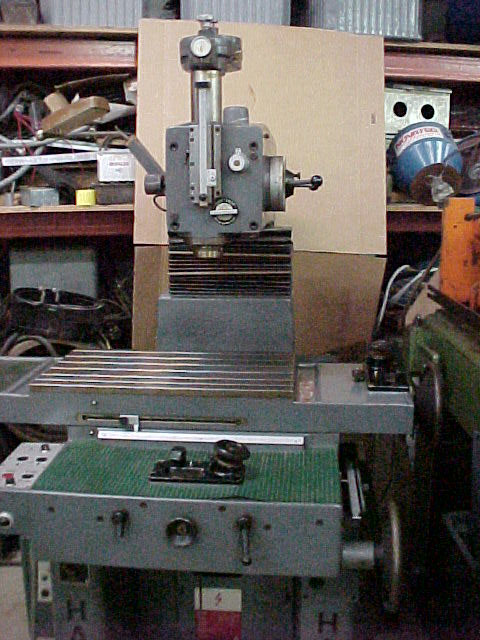I notice you all are having fun with small jig borers. Yes they are fun and they are beautiful to run but, they are very serious machine tools.
The Hauser 2 BA and 3 BA, along with the MP 2K SIP and the No 1 1/2, 2 and 3 Moore all belong to the same class of small jig borers. Espically the Moore was used by the punch and die makers. Again referring to my analogy of the printing plate, the care with which it is made determnies the outcome of thousands of units of product.
A single punch can be lined right up with the die and stripper, but seldom is there a single punch. Some punch and die units have hundreds of punches many of differing sizes. To get all the punches to line up with all the dies and strippers takes fantastic accuracy in the placement of all the holes involved. Think of a modern progressive die - wow!
Factories that make their fortunes selling products that rely on stampings have no trouble justifying the cost of some small jig borers. Hoever the jig borers in that trade work hard. To keep up with making new tooling and repairing old tooling which many times are made in duplicate,these cute little machines ran every day, sometimes two shifts.
They have to be accurate and be able to stay accurate after thousands of hours running time.
The Moore, Sip and Hauser machines of that size were all made to be operated from the sitting position. Every control was placed for the maximum convenience. These things were run 8 hours a day, the operator had to like them.
I am not sure about the Hauser machnes, but the MP 2K SIP had its spindle head mounted in an INVAR frame. Tha Deckel LK series jig borers had an INVAR compensator bar.
The use of INVAR kept the spindle in its original "Y" setting as the machine warmed up.
The Moore didn't require such a set up because the Moore's driving machinery was on top of the column instead of within it and the spindle head and quill didn't suffer from the heating of the driving machinery.
The Moore shank tools could be changed from the sitting position. A simple thing like that could have been the reason that Moore was always the favorite of the tool and die industry. Moore, as far as I know, didn't make boring tools. They seem to have offered the sliding eccentric boring heads common to US parctice in several different sizes. Individual jig borers would have many of these heads assignd to it. They were set for a definite sized hole and used as necessary.
The SIP and Hauser machines found favor in the precision mechanisms industry. I feel that that was because of the many ccessories offered with the Swiss machines. The Swiss offered sophisticated adjustable boring bars and a rather comprehensive line of setting devices and rotary tables.
The work in the instrument industry isn't as intensive as that in the tool and die industries but the work requires more versatility in the machine set ups since, unlike a punch and die set, Instrument and mechanism work has to be machined on many sides.
These small jig borers require a calm and steady temperament on the part of the operator. The work is always delicate and demanding. Shops doing instrument work or specialised design work can benefit from having one of these machines, but I really wouldn't reccommend one for general use in an ordinary machine shop.
The machines should always be under temperature controlled conditions and free from shock and vibration, especally the SIP MP 2K which has a roller mounted table and saddle.
This machine with its optically read SIP standard scales is almost a metrological instrument rather than a machine tool.
The Hauser 2 BA and 3 BA machines are rather hardy, like the Moore machines. They can survive a clean machine shop but they will not survive overloading. None of them will do well in dirty conditions.
Linley (later Boyar Shultz) made an American pattern jig borer with non compesated leadscrew settings. They were very accurate in the machine shop sense and made a practical machine for a better class of small work, without the formalities of the expensive and sphisticated machines. Anyone doing model steam engines would do no better than the Linley and these machines aren't expensive on the used market.
Jim Kizale








